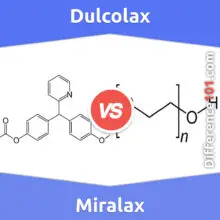Catabolism vs. Anabolism: Metabolism is a set of various processes which is needed by living things to maintain their lives. Catabolism and anabolism are two of these processes included in it. Both of these processes help in organizing the molecules. The main difference between catabolism and anabolism is that catabolism refers to the breaking down of complex molecules into smaller ones, which release energy, while anabolism is the process of building molecules, which needs energy.
Let’s take a closer look at Anabolism vs. Catabolism
| Oxygen Utilization | Only catabolism uses oxygen |
| Energy | Catabolism releases energy, while anabolism requires energy |
| Functionality | Catabolism functions during sleep, and anabolism during activity |
| Role | Anabolism p[lays constructive, and catabolism plays a destructive role |
Table of Contents
What is Catabolism?

If we look at catabolism meaning: it is a process which involves breaking complex molecules into simpler ones. This process is favorable to the human body, as it uses this process to generate energy for anabolism. Moreover, catabolism is exergonic, which means it works through oxidation and hydrolysis and releases heat as a result. There are several hormones which are the result of catabolism-controlling signals. For example, Glucagon, Melatonin, Adrenaline, Cytokines and Hypocretin are all catabolic hormones. Exercises like cardio workouts are catabolic exercises which burn calories by breaking down fats. The cells store various complex molecules and raw materials, which break down into new products during catabolism. For example, in the catabolism of polysaccharides, the protein and nucleic acids form amino acids, nucleotides and monosaccharides.
What Is Anabolism?

If we look at anabolism meaning: it is a process or series of different reactions which involves the formation of molecules from the smaller components. These are endergonic, meaning they need the energy to do further processing. Anabolism occurs due to anabolic hormones. For example, insulin is an anabolic hormone which causes glucose absorption, and anabolic steroids are also anabolic hormones which increase muscular growth. Anaerobic exercises like weight lifting are anabolic activities which increase mass and muscle strength. In anabolism, kinetic energy is converted into potential, which is totally the opposite of catabolism. Preparation of dipeptides by joining amino acids together, And Combining simple sugar to synthesize disaccharides and water, are some examples of anabolism.
5 key differences between Catabolism and Anabolism
| Components | Catabolism | Anabolism |
|---|---|---|
| Introduction | It is a process which involves breaking complex molecules into simpler ones | It is a process or series of different reaction which involves in formation of molecules from the smaller components |
| Requirements | Catabolism is exergonic, which means it works through oxidation and hydrolysis, and it does not require heat | These are endergonic, which means they require energy or heat in order to do further processing |
| Hormones Responsible | Glucagon, Melatonin, Adrenaline, Cytokines and Hypocretin are all catabolic hormones | Estrogen, Testosterone, Insulin and anabolic steroids all are anabolic hormones that cause anabolism |
| Effect on Body | Calories and fats are burned in this process. It also uses the stored food within the cell to generate energy | Anabolism repairs the tissues and increases muscle mass by using energy and heat |
| Energy Conversion | In catabolism, potential energy is converted into kinetic | In anabolism, kinetic energy is converted into potential |
Catabolism vs. Anabolism Similarities
- Whether it is catabolism or anabolism, both metabolic methods collectively constitute the whole metabolism process.
- Both of these processes are required by humans in order to maintain their bodies.
Catabolism vs. Anabolism Examples
Catabolism Examples
- Decomposition of hydroxide peroxide within cells to form oxygen and water.
- The reaction of glucose and oxygen during cellular respiration yields carbon dioxide and water.
Anabolism Examples
- Preparation of dipeptides by joining amino acids together.
- Combining simple sugar to synthesize disaccharides and water.
Catabolism vs. Anabolism Pros and Cons
Catabolism Pros and Cons

Pros of Catabolism
- Catabolism includes the breakdown of the ATP, which releases energy required for the metabolic processes.
- Catabolism occurs while digesting food as it breaks down foods into the simple nutrients the body needs, like dissolving an egg into essential and simple nutrients that your body can use.
Cons of Catabolism
- Catabolism can easily disrupt by any abnormal chemical reactions and can cause the catabolic disorder.
- Catabolic disorders can affect the ability of the body to break down large molecules and obtain energy, which can cause problems with energy regulation.
Anabolism Pros and Cons

Pros of Anabolism
- Anabolism is a very important process for repairing cells, increasing muscle mass and creating new tissues in the body.
- Anabolism also makes some new products by using energy, like the preparation of dipeptides or the synthesis of water and disaccharides by combining simple sugars.
Cons of Anabolism
- Anabolism is a process which requires energy, and if there is not enough energy present within the body, there won’t be any anabolism process.
- Anabolic steroids can cause muscle dysmorphia, which is a behavioral syndrome. This steroid can also cause strokes and heart attacks.
Comparison Chart

Comparison Video
Conclusion
Catabolism and anabolism are two main processes of metabolism. These processes are needed by the living organism in order to maintain their body to work properly. Both of these processes help in organizing molecules by using and releasing energy. But if we talk about catabolism Vs. anabolism differences, both work in different ways, as catabolism breaks down breaking the complex molecules into simpler ones and releases energy. While anabolism involves the formation of molecules from smaller components, and it requires energy for this process. If we compare catabolism versus anabolism effectiveness. Both affect the body in different ways. In catabolism, Calories and fats are burned, and it also uses the stored food within the cell to generate energy. While anabolism repairs the tissues and also increases muscle mass by using energy and heat.







